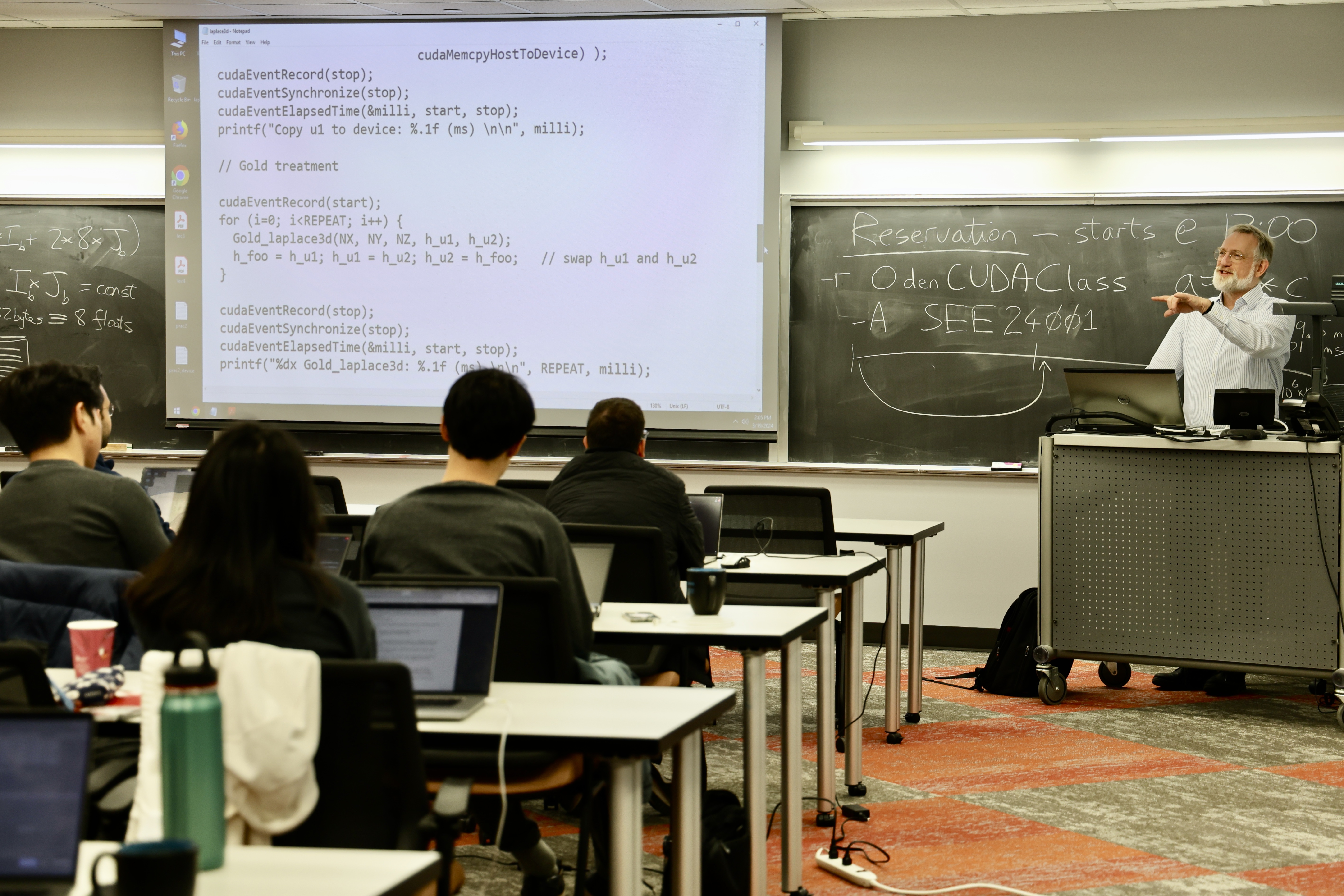Following the success of the CUDA programming for NVIDIA GPUs short course offered in 2022, the Oden Institute for Computational Engineering and Sciences at The University of Texas at Austin offered the same course, now in an intensive one week format, to graduate students, postdocs, and all members of the Oden Institute community.
The course, which took place in March, was led by Mike Giles, who holds a chair in Scientific Computing at the Mathematical Institute at the University of Oxford. Giles is a pioneer in the development of algorithms designed for GPU computing and has made many fundamental contributions to the field.
In his class, Giles shows students the ropes of NVIDIA's CUDA (Compute Unified Device Architecture) platform to harness the immense computational power of NVIDIA graphics processing units (GPUs) for general-purpose computing tasks. This approach allows programmers to offload parallelizable computations from the CPU to the GPU, significantly accelerating the execution of tasks ranging from scientific simulations to machine learning algorithms.
The importance of CUDA programming lies in its ability to unlock unprecedented performance gains, enabling researchers and developers to tackle increasingly complex problems with greater efficiency. By leveraging the parallel processing capabilities of GPUs, CUDA programming opens up new avenues for innovation across diverse fields, from scientific research and engineering simulations to artificial intelligence and data analytics.
Drawing from his extensive expertise, Giles led participants through a comprehensive exploration of CUDA programming, empowering them to harness the full potential of NVIDIA GPUs. This intensive week-long course builds upon the resounding success of Giles's similar CUDA workshop at the University of Oxford, which has attracted participants from diverse backgrounds including academia, industry, and government laboratories across the UK.
“I started CUDA programming in early 2007 when CUDA had its initial beta release,” said Giles. “I did a little bit of teaching on CUDA in 2008, and then in summer 2009 I gave the first one-week course in Oxford which is the basis for the current course. Apart from a couple of years during the Covid pandemic, I've taught it every year since then, with help from an Oxford colleague in recent years, and I've also given it in various different countries. In total I have probably trained around 1000 people so far.”
